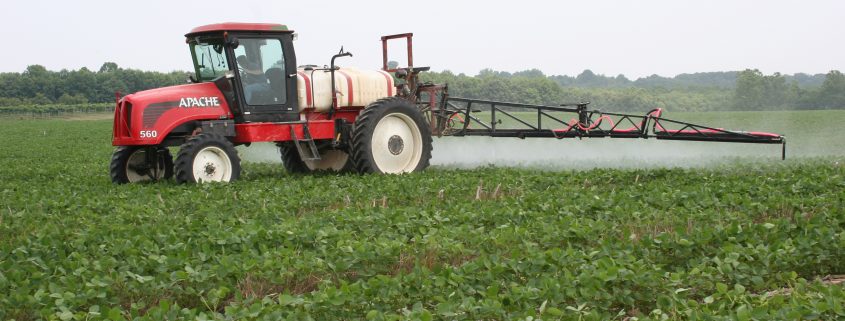A Tank Full of Sugar Helps the Profits Go Down
Adapted from original article written 6/1/2015.
Its been a struggle to get across our fields this year given all our precipitation. However I am sure there are “a plethora of opportunities” this year to to add sugar to your tanks to”perk that crop right up” so I thought I would dust off and re-post the below article originally entitled “Do Foliar Applications of Sugar Improve Soybean Yield”.
I also wanted to link to a few other articles from colleagues at the University of Nebraska “Sugar Applications to Crops – Nebraska On-Farm Research Network Results” and “Research Results: Sugar Applications to Crops“. In short the University of Nebraska team did not find a consistent yield increase in corn or sorghum and an 0.8 bu per acre yield increase in soybean. If farmers are considering a pass for just the sugar application, the average cost of ground application is $7.90 and aerial is $9.65 per acre; 2020 Iowa Farm Custom Rate Survey and the average yield loss caused by sprayer wheel track damage in soybean in rows less than 20 inches is 1.9 or 1.3% with a 90 or 120 foot boom, respectively.
I also want to give credit to my colleague Chad Lee who wrote a nice article entitled “Could Sugar Help Drought Stressed Corn?” that discusses sugar rates, biological activity and actual costs of product.
I am certain this re-posted article will stir up the same severe indignation as the original, however with November beans trading at $11.11 per bu locally today ROI is equally important under high commodity prices as it is low!
Do Foliar Applications of Sugar Improve Soybean Yield (Originally published: June 14th, 2011)
High commodity prices have led growers to consider many novel soybean inputs. One input that has garnered considerable attention is the foliar application of sugar products to increase soybean yield. The objective of this research was to evaluate soybean yield in response to various sources of foliar-applied sugar across four states in the Midwest. Field research studies were conducted at Arlington, Wisconsin; Urbana, Illinois; St. Paul, Minnesota; and West Lafayette, Indiana in 2010.The four sources of sugar evaluated in this study were:
- Granulated cane sugar
- High fructose corn syrup
- Molasses
- Blackstrap molasses.
All treatments were applied at the equivalent rate of 3 lb sugar a-1 and applied in 15 to 20 gal a-1 carrier. The treatments consisted of an untreated check, all four sources of sugar applied at V4, granulated cane sugar and blackstrap molasses applied at R1, granulated cane sugar applied at V4 and R1, and blackstrap molasses applied at V4 and R1.
No positive or negative (phytotoxic) effects were visually observed on the soybean foliage at any location within 10 days following foliar applications (data not shown). Furthermore, sugar did not increase soybean yield within location (data no shown) or across locations [P= 0.60 (Figure 1)], regardless of source. While this study cannot conclusively prove foliar applications of sugar will not increase soybean yield, the authors conclude that other management strategies to improve soybean yield should take precedence over applying sugar.
The source of this data is:
Furseth, B. J., Davis, V., Naeve, S., Casteel, S., and Conley, S. P. 2011. Soybean Seed Yield Was Not Influenced by Foliar Applications of Sugar. Crop Management. Accepted: 6/1/11.





